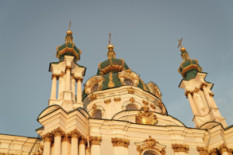Switzerland is an example of a country where politics are primarily conducted at the local level. There has never been a centralized political administration in the classical sense. It's worth noting that even in the Middle Ages, after the Burgundian Wars, specifically in the 1470s, Switzerland saw the emergence of a proto-parliament called the Council. It was needed to govern new dependent territories under the Confederation's rule. While not the most effective body, its establishment was significant.
After the civil war in 1847, Switzerland created a bicameral parliament consisting of a large and a small chamber, which was equal from the outset. The large chamber, also known as the "National Council," is the representative body of the entire nation. The small chamber, the Council of States, comprises representatives from the federation's cantons. Together, they are called the "Federal Assembly." All decisions have been made solely based on the consensus of these two chambers since then.
What are the features of the Swiss political system? There are many, and we'll discuss some of them.
Stability
Experts note that party representation in parliament in this country is relatively stable. There are no sharp fluctuations in party representation as seen in the parliaments of other democratic nations. Even a 1.5% shift becomes a subject of active discussion in the media and society.
For instance, this year's pre-election forecasts suggest that "green" parties will lose up to 2.5% of the votes, while the Liberals from the FDP will gain 1.2% compared to 2019. All newspaper headlines are filled with discussions of these prospects.
What is the reason behind such exceptional stability? It lies in the stability of Switzerland's entire societal system. The answer here is simple.
Of course, changes do occur, but they happen slowly. Political and societal systems require more time for transformations compared to the vast majority of other countries.
The system established 175 years ago is still functioning today. This is yet another testament to its stability.

Bicameral System and 246 Parliamentary Seats
As previously mentioned, the Federal Assembly in Switzerland consists of two equal chambers: the Council of States, with 46 members, and the National Council, represented by 200 parliamentarians. These are equal chambers, so they cannot be referred to as upper and lower.
The number of representatives in the Council of States has remained unchanged since the establishment of the bicameral parliament: each canton elects two representatives to it. Six former half-cantons (Nidwalden, Obwalden, Appenzell Outer Rhodes, Appenzell Inner Rhodes, Basel-City, and Basel-Country) elect one representative each.
The composition of the National Council, the larger chamber, has undergone several changes. In 1848, it had 111 members, with each deputy representing around 20,000 Confederation residents. Interestingly, only men were eligible to be elected; women began to be elected only in 1971.
However, as the population increased, so did the number of deputies. Since 1962, the National Council has consisted of 200 deputies, with one deputy representing approximately 40,000 residents.
The number of deputies from a specific canton depends on the population within its territory. Importantly, each canton has the right to at least one seat in the National Council, even if its population is less than 40,000 people. A contemporary example is the canton of Appenzell Inner Rhodes.
Majoritarianism + Proportionality
In virtually all cantons, senators in the Council of States, also known as the "deliberative chamber," are elected through a simple majority vote, using the majoritarian system.
However, a proportional representation system is employed in the cantons of Neuchâtel and Jura.
Representatives in the National Council, starting in 1919, are elected exclusively through a proportional representation system, with cantons serving as electoral districts.
Therefore, in National Council elections, the percentage of votes each party obtains influences the number of representatives it sends to parliament. For the Council of States, individual personalities that must be known and trusted by the voters are essential.
In the Council of States, historically, two parties have dominated and, in the last 2019 elections, received just over 26% of the voters' support combined. These parties are the Center Party (Mitte, formerly known as the Christian Democrats, the party that lost the civil war in 1847) and the Free Democratic Party (FDP, the party that won that war). In contrast, the Swiss People's Party (SVP) holds only six seats in this chamber.
Strength and Weakness
In Switzerland, the president cannot veto parliamentary decisions, and the government lacks the right to challenge them. Furthermore, even the Federal Court cannot question the constitutionality of the Federal Assembly. This is where its strength lies.
However, at the same time, the parliament cannot express a vote of no confidence in government representatives or the entire cabinet, nor does it have the right to recall a minister before the end of its term, except in cases of serious illness of a government member. Therefore, the parliament's power in this regard is limited.
The sole means of expressing dissatisfaction with executive authority is through the Federal Council elections, which occur every four years, coinciding with parliamentary elections. However, since 1848, such "resignations" of federal councilors (ministers) have occurred only four times. Thus, the parliament does not require expanded powers to influence the executive branch.
Opposition
In Switzerland, there is no struggle between the parliamentary majority and the opposition, as seen in many democratic countries. Why? Because direct democracy is at work, and any parliamentary decision can be brought to a referendum and rejected. To do this, 50,000 valid signatures must be collected within 100 days after the publication of the law's text. In such a situation, any potentially oppositional forces must have their sphere of responsibility in the government. Otherwise, wielding the instrument of the "referendum," they can, if necessary, paralyze all political life. Consequently, the parliament and the government seek a compromise that will be supported by the majority of deputies and the people.
This makes the Swiss people the main opposition in Switzerland, and they keep everyone on their toes.
Political Life
Political life in the country is very active, but political crises are managed differently here.
Old Parties
From 1848 until the introduction of the proportional representation system in 1917, the Liberals (now FDP.Die Liberalen) dominated the Federal Assembly. In contrast, the Catholic conservative party, the Christian Democrats, now Die Mitte, served as a counterbalance.
Things began to change after introducing the proportional representation principle, and even small political parties could enter parliament. The Swiss Social Democratic Party (SP), the Swiss People's Party (SVP), formerly the Farmers, Traders, and Citizens' Party (BGB), entered the National Council during that time. The latter now dominates the Swiss parliament.
Throughout the 20th century, the country's political landscape was primarily dominated by four parties: Liberals (FDP), Christian Democrats (CVP), Socialists (SP), and the Swiss People's Party (SVP). In the 21st century, environmentalist parties, the Green Party (GPS) and the Green Liberal Party (GLP) began to contend for leadership. In the federal elections of 2019, they together secured around 20% of all seats in the Federal Assembly.
Currently, the "new parties" are slowly losing ground, and in the elections on October 22, the "old parties" have all the chances to strengthen their positions.
"The current political climate is more favorable for conservatives," says political scientist Michael Hermann from the Sotomo Institute.







